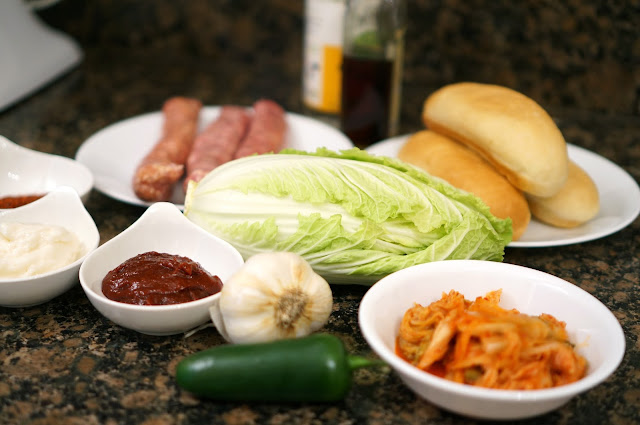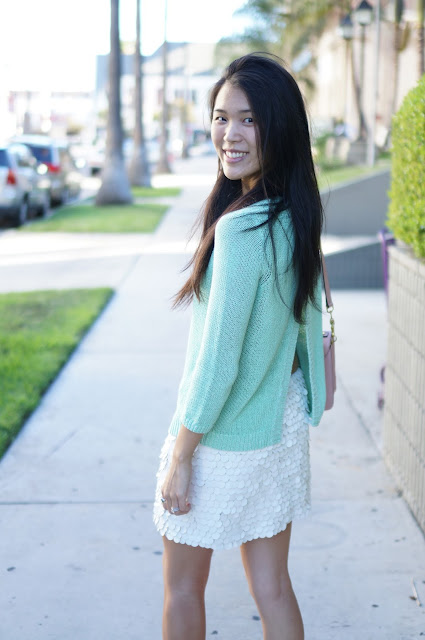
The Dodgers are the hottest team in baseball right now - at least, according to my sports-loving husband. I was dragged by my family to Dodger games as a child, and I often found them to be quite boring. The one thing I fondly remembered were the famous Dodger Dogs, those super long hot dogs that were perfectly salty. As I've grown older, I've come to appreciate baseball a bit more. And while I'm admittedly not a super-fan, I'm voluntarily heading back to Dodger Stadium again this Friday to root for my team with Dr. S and my parents. In commemoration of Hyun-Jin Ryu, the talented Korean starting pitcher, I thought it fitting to make a Korean version of the Dodger Dog! If the Kogi Truck can mix tacos with Korean food, why not make a Korean hot dog? I randomly came up with this recipe, using ingredients super common in Korean cooking. I topped off a jalapeno pork sausage with a quick slaw and stir-fried kimchi, finished with a spicy gochujang aioli stir-fried kimchi. They turned out delicious and were decently spicy with a garlic punch, which is exactly how I like my Korean food. Go Dodgers!

Sarah's Korean Dodger Dog
(aka Spicy Korean Sausages with Cabbage Slaw, Kimchi, and Gochujang Aioli)
Makes 4 hot dogs
Ingredients
4 jalapeno pork sausages (but any hot dog/sausage will do)
4 hot dog buns
1/2 cup of napa cabbage kimchi
1 small napa cabbage, or 1/2 a large napa cabbage
1/2 a jalapeno, cut into a small dice
2 garlic cloves, minced or crushed
3 tablespoons of rice vinegar (or use regular white vinegar to substitute)
2 teaspoon of sesame oil
2 teaspoons of Korean red pepper flakes
Salt to taste
1/4 cup of mayonnaise
1 tablespoon of gochujang paste, a Korean red pepper paste
Directions
1. Make a quick slaw by chopping napa cabbage into thin 1/2 inch strips. Place into large bowl and toss with diced jalapeno, rice vinegar, 1 tsp of sesame oil, and red pepper flakes. Add salt to taste then set aside.
2. Make the gochujang aioli by mixing mayonnaise, gochujang paste, and garlic and set aside.
3. Grill sausages/hot dogs on low-medium heat, turning every so often to prevent burning. If a barbeque grill is not available (like in my case), you may just cook them on a stove top in a large pan.
4. Meanwhile in a small saucepan, lightly fry the kimchi with 1 tsp of sesame oil on medium heat until lightly browned.
5. Once the sausages are close to being cooked through, open up the buns and toast them face down until lightly browned.
6. Assemble your Korean Dodger Dog by placing the sausage in the bun, adding some stir-fried kimchi, then adding some cabbage slaw. Finish it off with a few dollops of the gochujang aioli. Enjoy!
















































